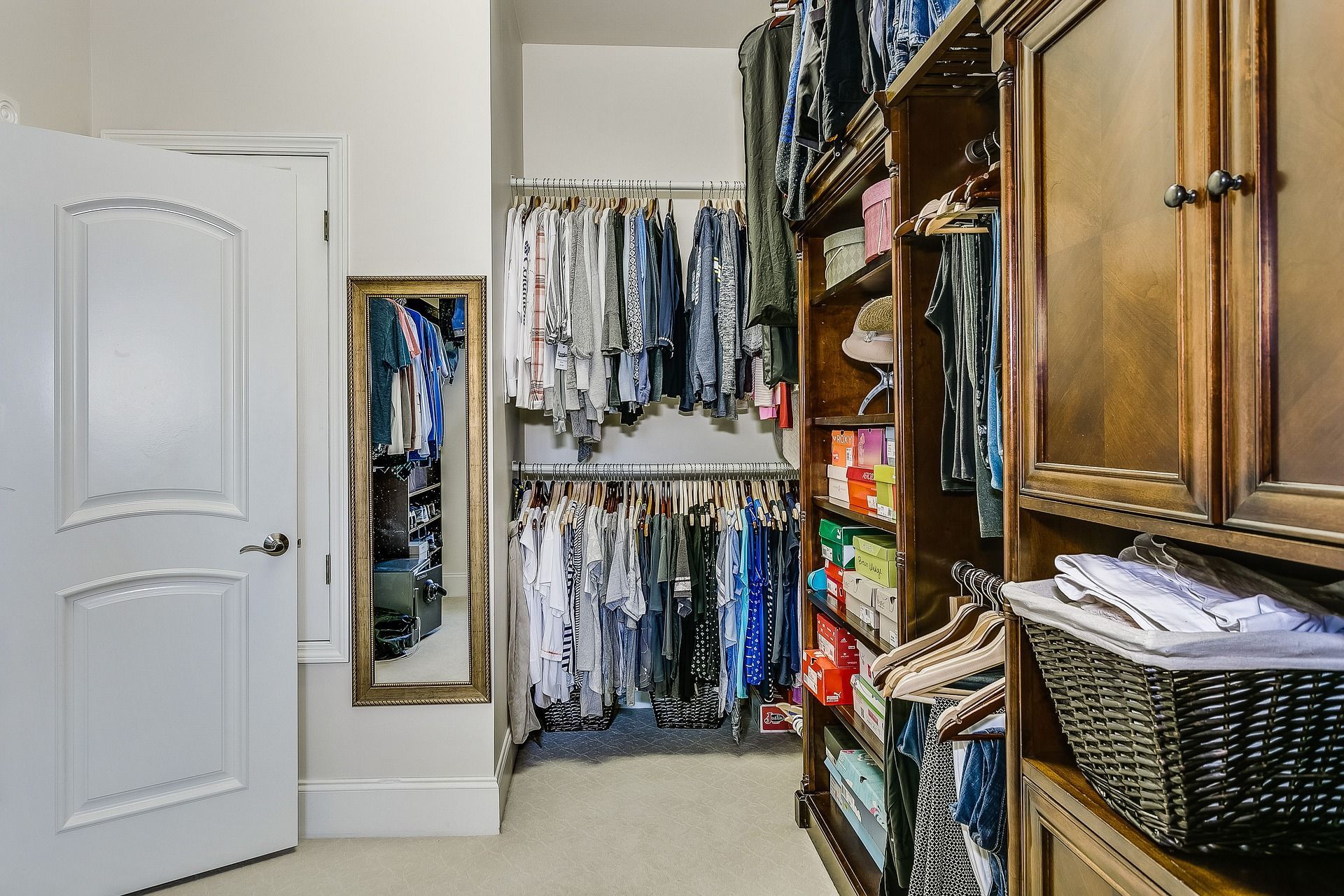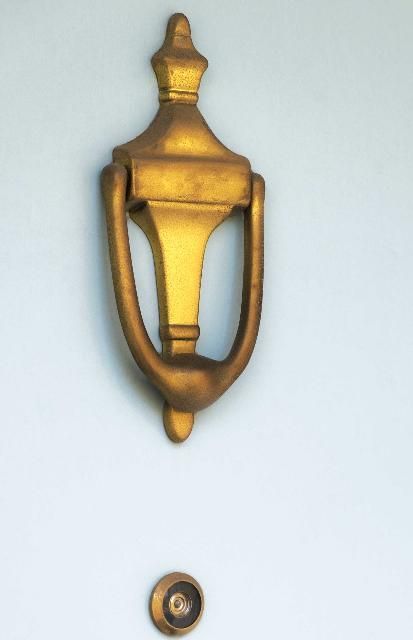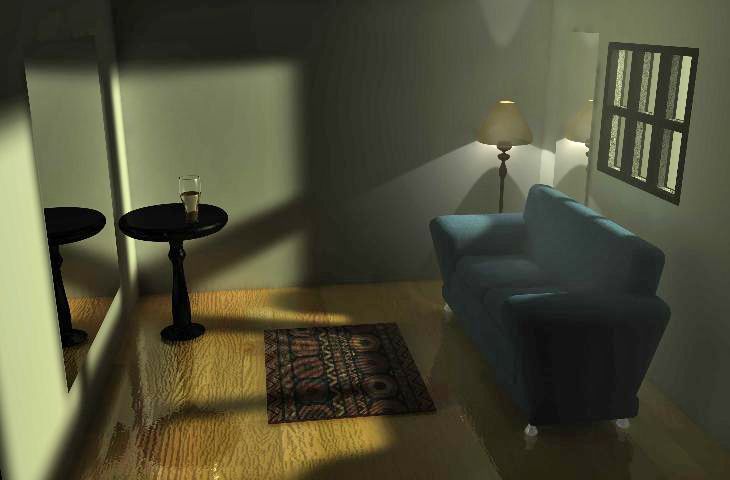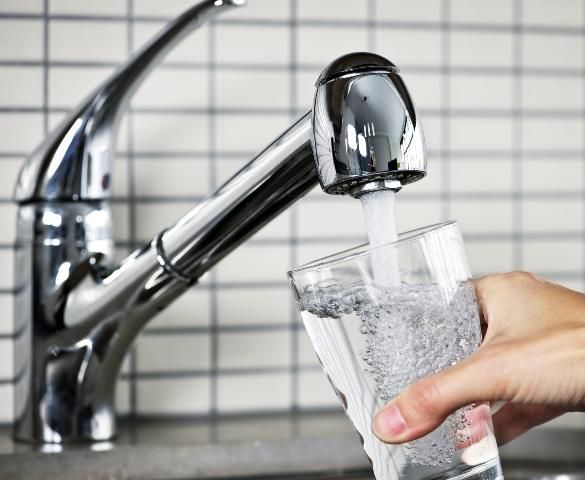One in three adults aged 65 and older experience a fall each year. 60% of falls occur in the home. There are changes you can make to reduce your personal fall risk while meeting your personal needs. Below is a list of possible hazards in your home and modifications that can be made for your safety.
Limited Reach
High shelves in the kitchen, closets, and other storage areas can be harder to reach. Lower shelves three inches from their standard height for easier access.

Credit: Teena Cobb/Pixabay.com
Trying to reach high closet rods can be dangerous. Use height-adjustable closet rods to keep your clothes within reach. If you must use a step stool, use one that has a bar to hold on to. Never use a chair as a step stool. If you need to extend your reach, use an assistive device such as a “reacher” or a grabber.
You can find examples of assistive devices online (see Get More Information). You can also reach out to an occupational therapist for recommendations.
Install a peephole in the front door at the right height for you. This will allow you to see out without the hazard of trying to balance on your tiptoes.

Credit: iStock/Thinkstock.com
Limited Vision
Unless you have perfect vision, wear your glasses when moving around the house.
Small numbers on telephones can be difficult to read. If you are disoriented from a fall, it can be especially hard to see the numbers. Purchase a telephone with a large number keypad and keep at least one phone at a low level for easy reach if you do fall. Also, keep a list of emergency numbers by the phone printed in large font. If you use a cell phone, create emergency contacts that can be autodialed easily.

Credit: Hemera/Thinkstock.com
Dim lighting in your house can be dangerous. Increase the wattage of your light bulbs to brighten your rooms and allow you to easily see obstacles in your path. It is also a good idea to install overhead lights and night lights near walkways, stairs, and entrances. Keep a lamp next to your bedside for easy access to light during the evening.
Hearing Impairments
In case of a fire, it is important that you can get out of your house safely and quickly. If you have a hearing impairment, buy smoke detectors with strobe lights.
Be sure you can hear the doorbell throughout your house. If you can hear the doorbell on the first ring, there will be no need to rush, which can increase your risk of falling.
Limited Flexibility or Lifting Ability
Some handles on cabinets and drawers are not easy to grip. Choosing u-shaped or d-shaped handles will allow you to grasp handles more easily.

Credit: iStock/Thinkstock.com
Install single-lever faucets in your kitchen and bathroom. They are easier to adjust than hot and cold-water knobs.
Limited Mobility
Going up and down stairs is one of the leading causes of falls among older adults. Be sure to use the handrails on both sides of the stairs.
Use reflective tape to mark changes in flooring levels.
Throw rugs can slip easily, especially on tile and wood floors. Remove rugs or secure them with a nonstick rug runner between the floor and the rug; double-sided tape can also be used.
Older adults often have a harder time showering as they age. Have a handheld showerhead installed and sit on a bath bench or chair while showering.
Install grab bars to help you get in and out of the bathtub safely. This will reduce your risk of slipping and falling.
Use a walker or wheelchair in your home as well as outside if you are unsteady on your feet.
Patios, driveways, and stairs can be difficult to walk on, especially when wet. Use textured surfaces for these areas to increase your stability. Keep these areas clear of leaves and other debris that can increase risk of slipping or tripping.
Get More Information
Your local UF/IFAS Extension Family and Consumer Sciences (FCS) agent may have more written information. Look for "Cooperative Extension Service" in the government pages of your telephone book or search online; in Florida, find your local UF/IFAS Extension office at https://sfyl.ifas.ufl.edu/find-your-local-office/.
Other reliable websites include:
- Centers for Disease Control and Prevention https://www.cdc.gov/steadi/patient-resources/index.html
- National Council on Aging/Center for Healthy Aging https://www.ncoa.org/older-adults/health/prevention/falls-prevention/
- Department of Health and Human Services/Administration on Aging https://www.hhs.gov/aging/index.html
- Assistive Devices—Medline Plus http://www.nlm.nih.gov/medlineplus/assistivedevices.html
- National Institutes of Health https://www.nichd.nih.gov/health/topics/rehabtech/conditioninfo/device